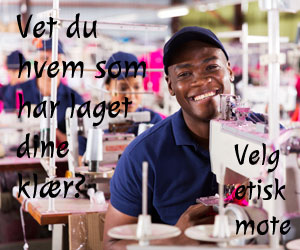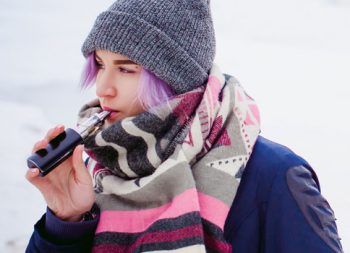Ethical and environmentally friendly fashion – Why?
There’s an increasing focus on ethically produced, and environmentally friendly, clothing. But do they actually make a difference? We take a look at how production affects both people and the environment.
The media has in recent years written a lot about which clothing brands pay and treat the workers the worst. The Swedish company H&M has «branded» as one of the worst wonse several places. Garment workers in countries with little or no control over how workers are treated or what they get paid, often have a salary that is lower than the cost of basic needs for living.
According to Labour Behind the Label, who’s working for the garment workers rights, the minimum wage in Bangladesh is only 18% of a living wage.
«For and average item of clothing only between 0.5-3% of the cost goes to the worker who made it. This means that on an €8 t-shirt, the most a worker will get paid is 24 cents.»
Asia Floor Wage
These figures talls us that there it is not neccessary for a huge salary increase in order to increse the workers pays to living wages. Can you spare 24 cents per piece of clothing you buy to double the wages for the garment workers?
Asia Floor Wage has calculated the living cost in several different Asian countries, and set a standard to what they believe should be the correct minimum wages. They have looked at expenses like food, school and health, which are all things we can all agree on is necessary for a minimum standard of living.
From a development perspective, we know that when a family gets better conditions, this has ripple effects. It creates opportunities for trade between people and helps to lift the local community in the long run. That’s when we get development.
Clothes and the environment
Clothing and clothing production is a real environmental bomb. Huge amounts of water are needed to grow cotton, and large amounts of harmful chemicals and pollutants are often used in production. This is a good reason to choose clothes made from organic cotton, which, according to AboutOrganicCotton, requires 71% less water and 62% less energy than pesticide-produced cotton.
Framtiden i Våre Hender say that every garment causes at least 1 to 17 kg of carbon dioxide! Do you know how many pieces of clothing you have in your closet?
What can you and I do?
By using our purchasing power as consumers, we can choose to support these good measures and opt out of the unethical manufacturers. This way we give a clear signal to manufacturers about what we want and not.
You can also….
- Look for ethical and environmentally friendly production labels
- Ask at you local clothing stores for ethically and environmentally friendly manufactured clothing
- Take good care of the clothes you have
- Buy second hand clothes
- Swap clothes with friends, family and acqaintances
Notice that not all ethically produced clothes are labeled as such. Small, local manufatures often don’t have the resources to gett hose labels on their clothes, but may still be just ethically manufactured. A good example of a small but very ethical webshop is naSuma in Tanzania. Recommended!
At last, but not least, print out Framtiden i Våre Hender’s list of brands who support a safe every day life for the workers, bring it with you in our handbag – then you’ll know which shops you’ll want to do you business at 🙂 Are your favourite brands on the list?


















